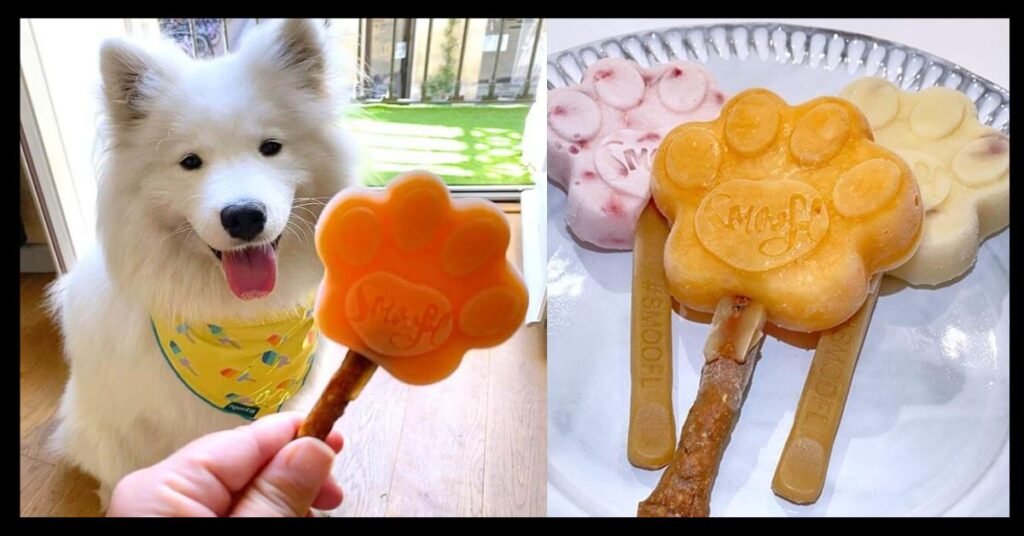Keeping pets cool and hydrated during hot weather is essential, and frozen dog treats like pupsicles provide a fun, nutritious way to do just that. Pupsicles are frozen snacks made from dog-safe ingredients that offer hydration, essential nutrients, and a refreshing break from the heat. This article explores easy, healthy pupsicle recipes that are safe for dogs, along with tips for preparation, ingredient selection, and storage.
Table of Contents
ToggleWhat Are Pupsicles?
Pupsicles are frozen dog treats typically made with pet-friendly fruits, vegetables, yogurts, broths, or peanut butter. They are shaped using ice cube trays, silicone molds, or even popsicle molds for convenience. Pupsicles are not only a tasty treat but can also support hydration, improve dental health, and provide mental stimulation.
Benefits of Pupsicles for Dogs
1. Cooling and Hydration
Pupsicles are ideal during warm weather. They help dogs cool down and stay hydrated, especially after outdoor play or walks.
2. Mental Stimulation
Chewing or licking frozen treats can keep dogs occupied and mentally stimulated, helping prevent boredom-related behaviors.
3. Nutrition Boost
Many pupsicle recipes include fruits and vegetables rich in vitamins, minerals, and fiber, supporting a dog’s overall health.
4. Dental Health
Chewing on frozen items may help reduce plaque buildup, although pupsicles are not a substitute for regular dental care.
Safe Ingredients for Pupsicles
Before making pupsicles, it’s important to choose dog-safe ingredients. Always avoid toxic items such as chocolate, xylitol (a sugar substitute), grapes, raisins, onions, garlic, and macadamia nuts.
Dog-Safe Ingredients Include:
- Plain Greek yogurt (unsweetened)
- Unsalted chicken or beef broth
- Peanut butter (xylitol-free)
- Pumpkin puree (plain, not pie filling)
- Apples (seedless)
- Bananas
- Blueberries
- Strawberries
- Carrots
- Spinach
- Oats
Easy and Healthy Pupsicle Recipes
1. Peanut Butter & Banana Pupsicles
Ingredients:
- 1 ripe banana
- 2 tablespoons unsweetened peanut butter
- 1 cup plain Greek yogurt
Instructions:
- Blend all ingredients until smooth.
- Pour into silicone molds or ice cube trays.
- Freeze for 4–6 hours or until solid.
- Store in an airtight container in the freezer for up to 3 weeks.
2. Chicken Broth & Carrot Crunch Pupsicles
Ingredients:
- 1 cup low-sodium, unsalted chicken broth
- 1/2 cup grated carrots
- 1 tablespoon chopped parsley
Instructions:
- Mix the ingredients in a bowl.
- Pour into molds or trays.
- Freeze until solid.
- Serve as a savory, hydrating treat.
Keyword Tip: Savory pupsicle recipe, broth dog treat.
3. Blueberry Oat Frozen Bites
Ingredients:
- 1/2 cup fresh blueberries
- 1/4 cup rolled oats
- 1 cup plain Greek yogurt
Instructions:
- Blend all ingredients until well mixed.
- Spoon into molds or trays.
- Freeze for several hours.
- Offer as a cooling treat on hot days.
Keyword Tip: Homemade frozen dog treat, blueberry dog pupsicle.
4. Apple Pumpkin Pupsicles
Ingredients:
- 1/2 cup unsweetened applesauce
- 1/2 cup canned pumpkin (plain)
- 1/2 cup water or broth
Instructions:
- Combine all ingredients and stir well.
- Pour mixture into molds.
- Freeze and store in airtight containers.
Keyword Tip: Pumpkin pupsicle for dogs, apple dog treat.
5. Watermelon Mint Refreshers
Ingredients:
- 1 cup seedless watermelon (cubed)
- 2-3 mint leaves (optional)
- 1/4 cup water
Instructions:
- Blend watermelon and mint until smooth.
- Pour into ice cube trays.
- Freeze and serve as needed.
Note: Mint is generally safe in small quantities. Avoid mint varieties like pennyroyal, which are toxic to dogs (source: ASPCA).
Tips for Making Pupsicles
1. Use Silicone Molds or Ice Cube Trays
They’re easy to use, clean, and available in pet-themed shapes.
2. Freeze Small Portions
Small pupsicles reduce the risk of choking and allow portion control for different dog sizes.
3. Introduce Gradually
Introduce new ingredients one at a time to monitor for allergies or sensitivities.
4. Use Fresh, Organic Ingredients
Opt for organic fruits and vegetables to reduce pesticide exposure.
5. Avoid Sugars and Artificial Sweeteners
Many processed foods contain xylitol, which is toxic to dogs.
Storage and Serving Guidelines
- Freezer Storage: Keep pupsicles in airtight containers or resealable bags to avoid freezer burn.
- Shelf Life: Most pupsicles stay fresh in the freezer for up to 2–3 weeks.
- Serving Size: One or two pupsicles per day is usually sufficient, depending on the dog’s size and dietary needs.
- Supervision: Always supervise dogs while they enjoy frozen treats, especially if using stick-style molds.
Pupsicles for Special Dietary Needs
Dogs with specific health conditions may require modified pupsicle recipes:
- Diabetic Dogs: Use low-glycemic fruits like blueberries and avoid added sugars.
- Dogs with Kidney Issues: Avoid high-sodium broths and limit phosphorus-rich ingredients.
- Allergy-Prone Dogs: Stick to hypoallergenic ingredients such as pumpkin, oats, or single-protein broths.
Consulting with a veterinarian before introducing new treats is recommended for dogs with dietary restrictions.
Conclusion
Pupsicles are a simple and healthy way to show care for dogs while keeping them cool and happy. By using fresh, dog-safe ingredients and following best practices for preparation and storage, pet owners can offer enjoyable treats that support overall canine wellness. Whether it’s a fruity yogurt blend or a savory broth-based snack, pupsicles can be tailored to suit any dog’s taste.
For maximum safety and nutrition, recipes should be crafted with ingredient awareness and portion control in mind. As part of a balanced diet and active lifestyle, pupsicles are a delightful way to reward dogs during warm weather.







